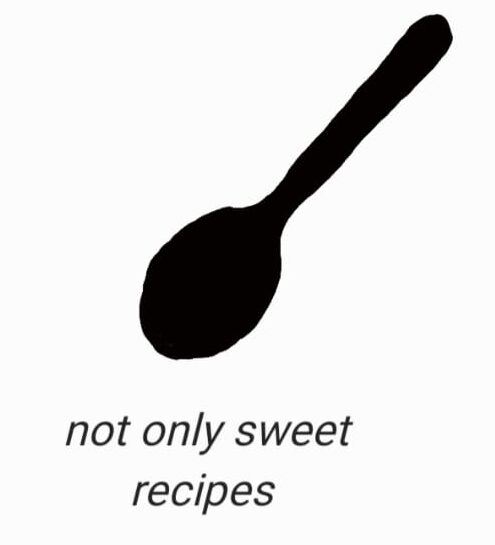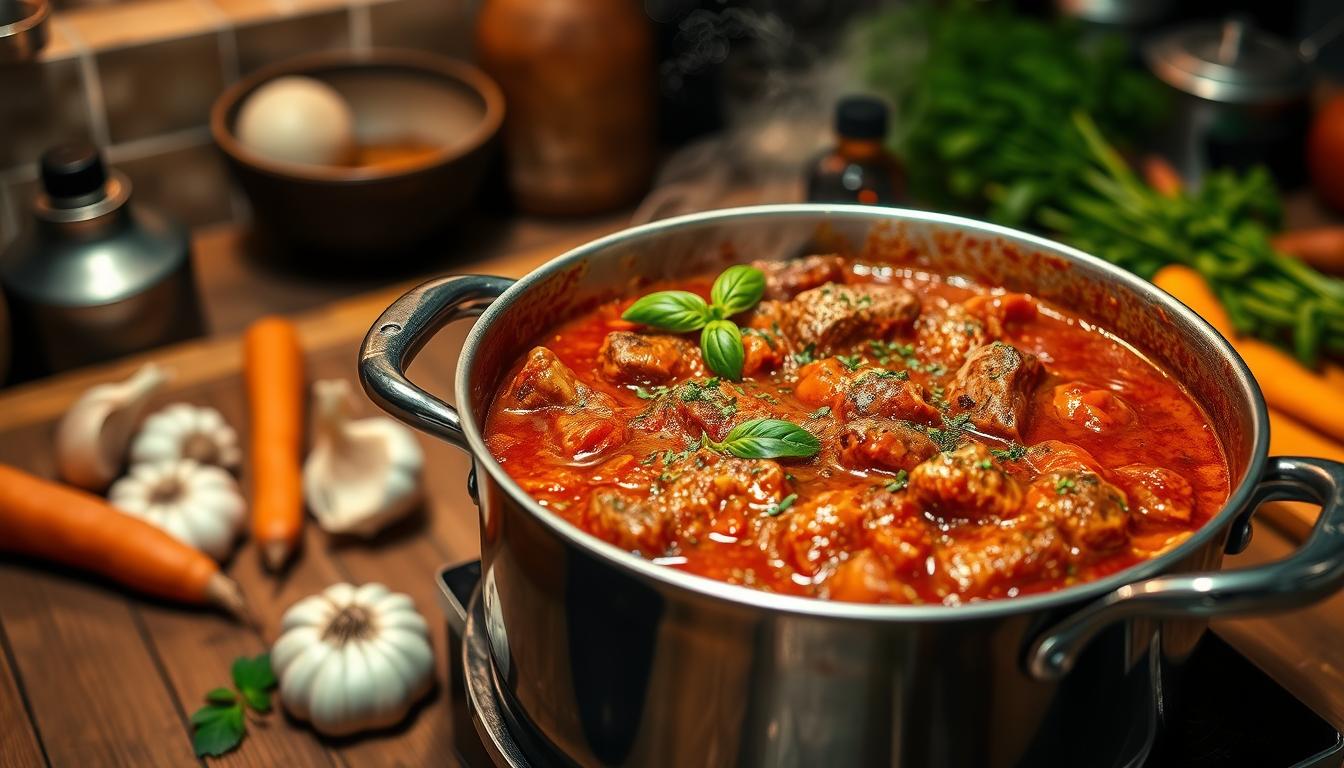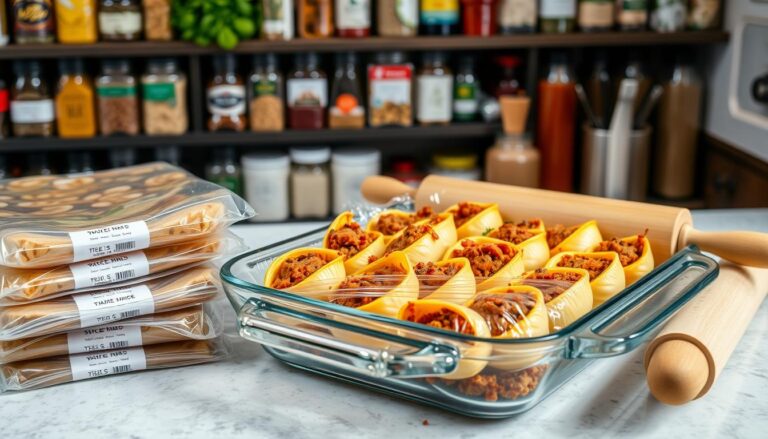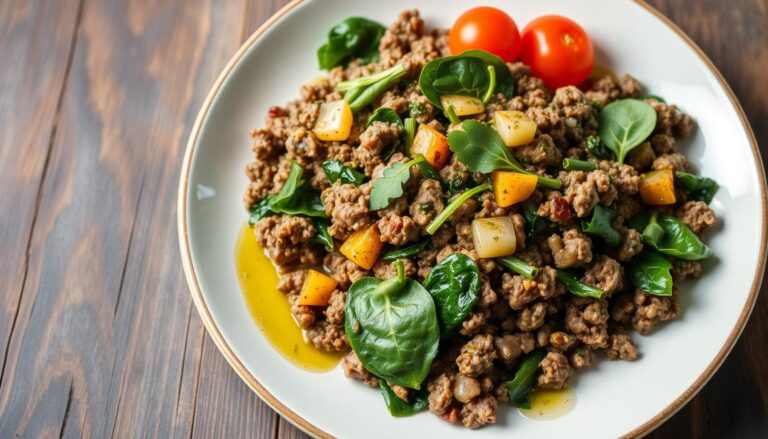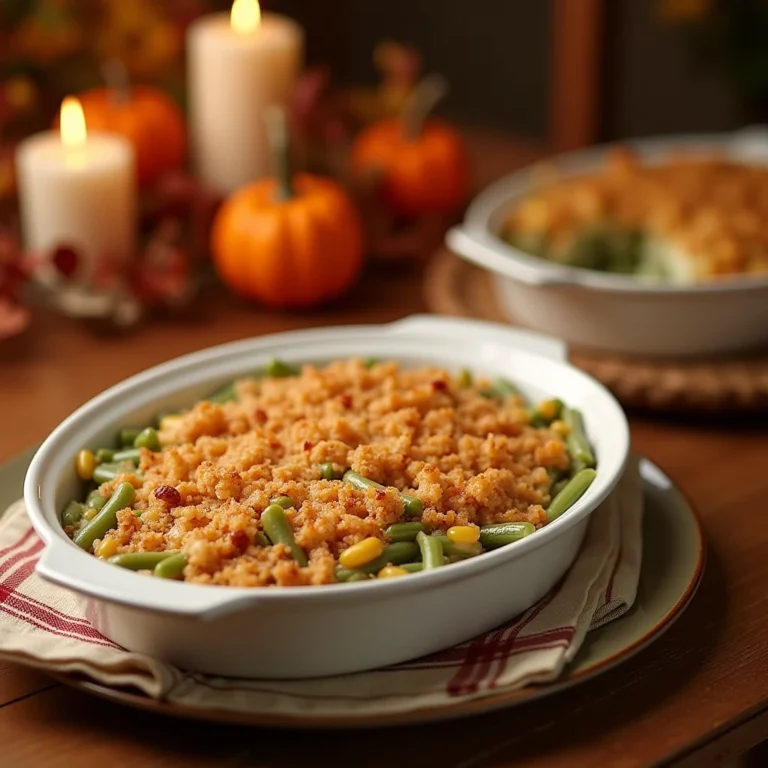intro
Imagine the scent of simmering beef and the rich aroma of tomatoes. Add the warmth of freshly cooked pasta, and you get the essence of authentic Italian Ragu alla Bolognese. This dish is more than a recipe; it’s a cultural touchstone in Italy.
let’s discover Recipe for Ragu of Beef.
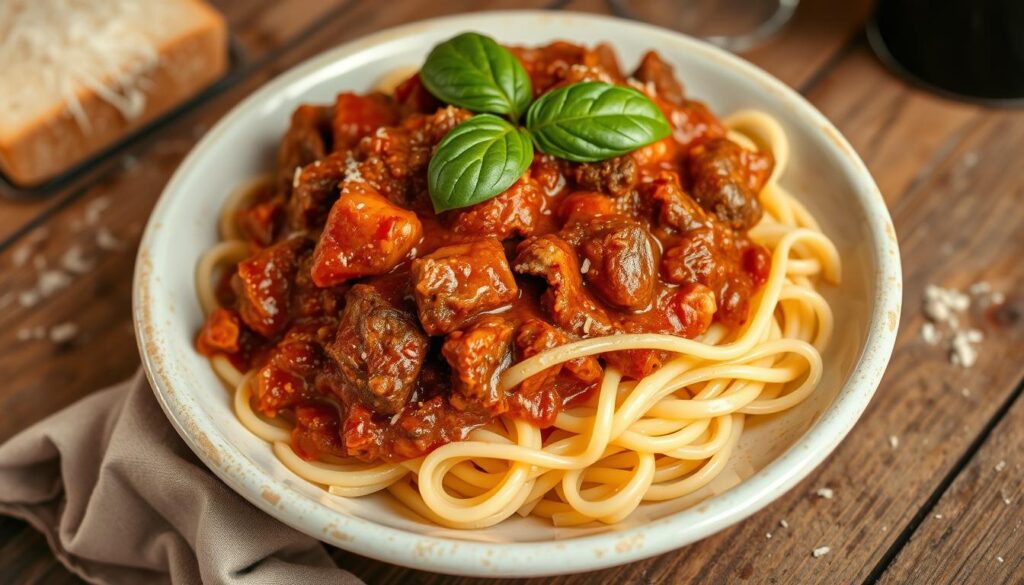
Table of Contents
Key Takeaways
- Authentic Italian Ragu alla Bolognese is a rich, stew-like meat sauce with a distinct flavor profile, differing from the common tomato-heavy versions found elsewhere.
- The recipe for this classic dish was officially filed with the Bologna Chamber of Commerce in 1982, underscoring its cultural significance in Italy.
- Slow cooking is essential for developing the complex flavors and tender texture of the Ragu, with the recommended cooking time being 2.5 to 3 hours.
- Fresh pasta, such as pappardelle, is the traditional accompaniment for this dish, highlighting the emphasis on quality ingredients in Italian cuisine.
- The use of specific brands for ingredients like tomato sauce and the inclusion of milk as a secret ingredient showcase the attention to detail and nuanced techniques involved in authentic Italian cooking.
Understanding Traditional Italian Ragu: A Rich Heritage
Ragu, a meat-based sauce from Italian cuisine, is a true treasure. It’s a slow-cooked beef sauce, often paired with pasta. This dish shows the deep history and tradition of Italian food.
Its story goes from humble beginnings to regional flavors. The official recipe in Bologna adds to its charm. The tale of ragu is as fascinating as the dish itself.
Origins of Ragu in Italian Cuisine
The roots of ragu lie in northern Italy, where meat sauces have been common for ages. The word “ragu” comes from the French “ragout,” a slow-cooked stew. Italian cooks made it their own, adding their touch to the authentic bolognese sauce and italian beef ragu.
Through generations, the recipe has evolved. Each region has made its own version of this slow-cooked beef sauce.
Regional Variations and Cultural Significance
Though ragu’s core stays the same, each region in Italy has its twist. Emilia-Romagna’s tomato-based ragu is hearty. Tuscany’s wine-infused sauces are more delicate. These differences show Italy’s culinary diversity.
Ragu’s cultural value is huge. It’s seen as a symbol of family, community, and the joy of home-cooked meals.
Bologna’s Official Recipe Registration
The authentic bolognese sauce is very special. In 1982, the Academia Italiana della Cucina registered its recipe with the Bologna Chamber of Commerce. This move aims to keep the traditional ways alive.
It ensures the dish’s authenticity. This is a source of pride for Bologna and Italy.
Essential Ingredients for an Authentic Beef Ragu
Making a top-notch recipe for ragu of beef starts with choosing the right ingredients. The key is the coarsely ground beef from the chuck cut. It makes the beef ragout tender and rich. The soffritto, made from finely diced carrots, celery, and onions, adds a lot of flavor.
Using high-quality canned tomatoes, like San Marzano or Muir Glen, gives the sauce a true tomato taste. A bit of red wine and beef stock or broth add depth. Herbs like thyme, basil, and oregano bring out the Italian taste.
| Ingredient | Quantity |
|---|---|
| Beef chuck roast, coarsely ground | 2-1/2 pounds |
| Onions, carrots, celery (mirepoix) | 3 cups, finely diced |
| Canned crushed fire-roasted tomatoes | 1 (28-ounce) can |
| Red wine or beef stock/broth | 1 cup |
| Tomato paste | 3 tablespoons |
| Dried thyme, basil, oregano | 3/4 teaspoon each |
| Bay leaves | 3 |
| Beef bouillon cubes or powder | 3 large cubes or equivalent |
| Pappardelle pasta | 3 (8-ounce) packages |
Choosing the right ingredients and following traditional methods will make an authentic, flavorful beef ragu. It will take you straight to Italy with every bite.
The Secret Behind Perfect Meat Selection
When making a true italian beef ragu or a hearty beef stew, picking the right meat is crucial. The secret to a tasty recipe for ragu of beef is in the meat choice and how you prepare it.
Choosing the Right Cut of Beef
For tender and juicy results, choose ground beef chuck with an 80/20 lean-to-fat ratio. This mix of lean and fat makes the italian beef ragu smooth and rich. Don’t use pre-ground beef. Instead, get it from your butcher or chop it yourself for a deeper flavor.
Importance of Pancetta Quality
Pancetta, or Italian cured pork belly, is key in many ragu of beef recipes. Choose a well-marbled pancetta for its rich, savory taste. The fat and flavor of the pancetta blend well with the beef, creating a balanced dish.
Proper Meat Grinding Techniques
For the best beef ragu, ask your butcher to coarsely grind the beef chuck. Or, chop it yourself for a rustic texture. The bigger pieces of beef cook better, making the stew more satisfying.
By picking the right beef, pancetta, and grinding method, you’ll make a delicious italian beef ragu. It will feel like a taste of Italy.
| Ingredient | Quantity | Nutritional Information (per serving) |
|---|---|---|
| Chuck Roast or Boneless Short Ribs | Varies | Calories: 317kcal, Carbohydrates: 15g, Protein: 26g, Fat: 17g, Saturated Fat: 6g, Cholesterol: 79mg, Sodium: 500mg, Fiber: 3g |
| Pancetta | Varies | Included in the overall nutritional information |
“The combination of beef and pork (from pancetta) contributes to the sauce’s rich taste and texture.”
Recipe for Ragu of Beef: Step-by-Step Guide
Making a real recipe for ragu of beef is a journey, but it’s one that’s filled with flavor. It’s a slow-cooked beef sauce that’s worth every minute. Here’s how to make the perfect meat ragu recipe.
- Begin by browning 1.3kg of chuck roast in a large Dutch oven or heavy-bottomed pot. Make sure to sear the meat on all sides until it’s dark and caramelized. This step locks in the flavors.
- Then, make the soffritto base by sautéing diced onion, celery, and carrots in the same pot. Cook them until they’re soft and smell great.
- Next, deglaze the pan with a full-bodied red wine, like Shiraz. This step gets rid of any browned bits from the bottom of the pot. Let the wine simmer and reduce by half.
- Add crushed tomatoes, tomato paste, and a bit of beef stock to the pot. Season with salt, pepper, and a pinch of dried oregano.
- Lower the heat to low, cover the pot, and let it simmer for 2.5 to 3 hours. Stir it every now and then. When it’s done, the meat will be tender and the sauce thick.
When the slow-cooked beef sauce is ready, serve it over freshly cooked pasta. Use 600 grams of lasagna noodles cut into strips. This ragu goes well with many pasta shapes, like tagliatelle, fettuccine, garganelli, and penne.
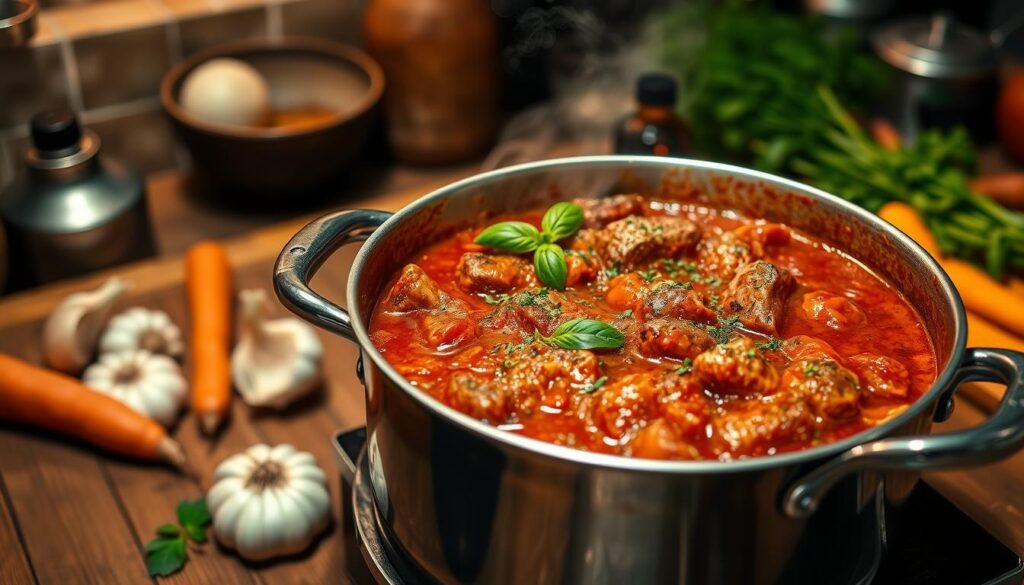
This recipe for ragu of beef can be made ahead. Store it in the fridge for up to 4 days or freeze it for up to 3 months. Enjoy this comforting, slow-cooked beef sauce as the ultimate meat ragu recipe for your next Italian meal.
Mastering the Soffritto Base
The soffritto is at the core of an authentic Italian beef ragu. It’s a mix of vegetables that gives the sauce its flavor. Making a great soffritto is key to a delicious homemade pasta sauce or authentic bolognese sauce.
Traditional Vegetable Preparation
The soffritto includes onions, carrots, and celery. These should be finely chopped for even cooking. The best mix is 2 parts onions, 1 part carrots, and 1 part celery.
Proper Cooking Techniques
Cook the soffritto in olive oil slowly until it’s soft but not browned. This takes about 8-10 minutes. It lets the onions and carrots sweeten and the celery’s bitterness balance out, making a rich base for the Italian beef ragu.
Slow cooking is important. It lets the soffritto’s flavors fully develop. If you rush it, your sauce might taste flat. So, be patient and let the soffritto do its job.
“The soffritto is the heart and soul of Italian cooking, and getting it right is the key to unlocking the true flavors of a classic bolognese sauce.”
Remember, the soffritto is the base of your homemade pasta sauce. Take your time to get it right. With a great soffritto, you’ll make an authentic Italian beef ragu that will take you straight to Italy.
Wine and Tomato Selection for Superior Flavor
Creating a true Italian beef ragu starts with the right wine and tomatoes. Choose a good red wine to enrich the sauce. San Marzano or Muir Glen canned tomatoes are great, offering sweetness and acidity.
Don’t settle for low-quality wine or tomatoes. They can ruin your homemade pasta sauce. The quality of these ingredients is key to a delicious recipe for ragu of beef.
Selecting the Perfect Red Wine
Choosing the right red wine for your Italian beef ragu is important. Here are some tips:
- Choose a dry, full-bodied red wine like Chianti, Montepulciano, or Sangiovese.
- Stay away from wines that are too tannic or oaky. They can overwhelm the sauce’s flavors.
- Go for a wine with medium to high acidity. This balances the beef’s richness and enhances the flavor.
Canned Tomato Selection
The tomatoes you pick for your ragu of beef matter a lot. Here are some top brands known for their great taste and texture:
- Bianco DiNapoli Organic Whole Peeled Tomatoes
- San Merican Tomatoes (SMT) Whole Peeled Tomatoes
- Pastene San Marzano DOP Tomatoes
- Mutti Whole Peeled Tomatoes
These premium tomatoes will make your Italian beef ragu rich and velvety. It’s sure to wow your guests.
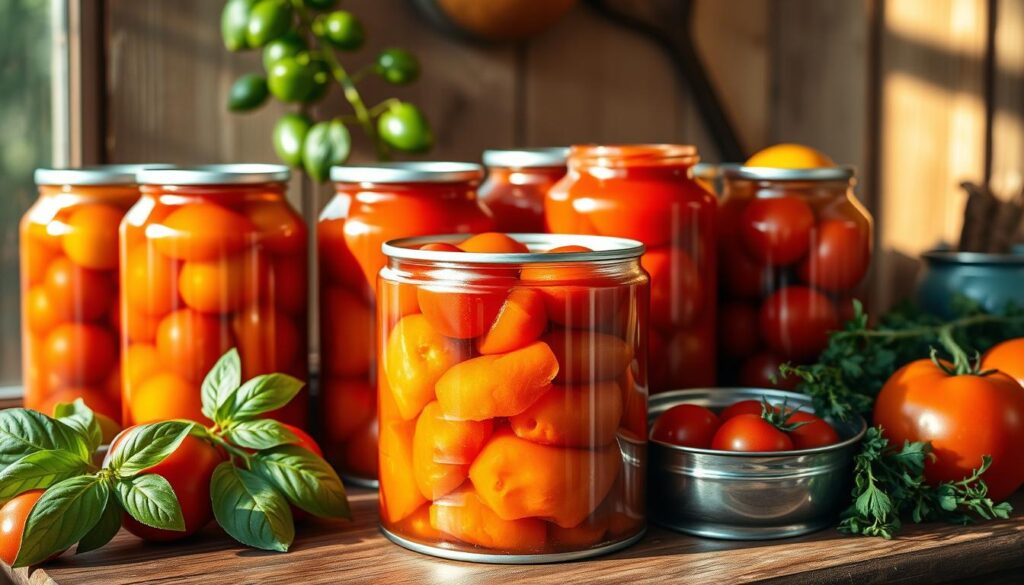
“The quality of the wine and tomatoes used in this recipe is paramount for achieving an authentic and flavorful ragu of beef.”
Slow Cooking Techniques and Timing
Making the perfect slow-cooked beef sauce or beef ragout needs patience and careful temperature control. The secret to a rich flavor in your beef stew is slow simmering.
Temperature Control Methods
Keep the temperature low to let flavors fully develop. Simmer the ragu at 200°F to 250°F. This tenderizes the meat and brings out the best flavors.
Ideal Simmering Duration
- Simmer the slow-cooked beef sauce for 2.5 to 3 hours on low heat, stirring now and then.
- In the last 30 minutes, take off the lid. This lets excess liquid evaporate, making flavors stronger.
- The long, slow cooking is key for the perfect texture and flavor in your beef ragout.
“The secret to a truly exceptional beef stew lies in the patient, low-and-slow approach. Let the flavors meld and the meat tenderize to create a dish that will warm both your body and soul.”
By using these temperature control methods and simmering for the right time, you can bring out the best in your slow-cooked beef sauce. This will make a dish that’s rich, flavorful, and sure to impress your guests.
Pasta Pairing and Serving Suggestions
Choosing the right pasta for your ragu of beef is key. Wide, flat noodles like pappardelle or tagliatelle work best. They hold onto the authentic bolognese sauce well, making each bite rich and meaty.
Cook your pasta al dente, which means it’s slightly firm. Then, toss it in the homemade pasta sauce while it’s still hot. Adding some pasta water helps the sauce stick to the noodles, making it silky and smooth.
Right away, sprinkle some Parmesan or Pecorino cheese on top. The cheese’s sharpness contrasts nicely with the recipe for ragu of beef. Add some fresh parsley or extra-virgin olive oil for extra flavor.
| Pasta Pairing | Flavor Profile | Cooking Time |
|---|---|---|
| Pappardelle | Wide, flat noodles that beautifully capture the authentic bolognese sauce | 8-10 minutes |
| Tagliatelle | Ribbon-like noodles that provide the perfect canvas for the rich ragu of beef | 8-10 minutes |
| Spaghetti | Classic long, thin noodles that allow the homemade pasta sauce to drape over each strand | 8-10 minutes |
The secret to a great pasta dish is matching the recipe for ragu of beef with the right noodles. With a bit of knowledge and the right pasta, your homemade pasta sauce will taste like Italy.
Storage Tips and Make-Ahead Instructions
Making a tasty slow-cooked beef sauce or beef ragout takes time. But, the good news is you can store and enjoy it later. These tips will help you save time and keep your beef ragu flavorful.
Refrigerator Storage
After your beef ragu cools, store it in an airtight container in the fridge for 4-5 days. The taste gets better with time, making it perfect for ahead-of-time meals.
Freezer Storage
For longer storage, freeze your beef ragu for up to 3 months. Just put the cooled ragu in freezer-safe containers or bags. When you’re ready, thaw it in the fridge overnight before reheating.
Reheating Tips
To reheat your beef ragu, add a bit of water or broth. This helps it regain its perfect consistency. Always heat it well before serving to ensure it’s hot and ready.
| Storage Method | Maximum Storage Time |
|---|---|
| Refrigerator | 4-5 days |
| Freezer | 3 months |
By using these simple tips, you can enjoy your beef ragu long after you make it. Get ready to enjoy the perfect meat ragu recipe whenever you want!
Common Mistakes to Avoid When Making Ragu
Making a true recipe for ragu of beef or homemade pasta sauce needs care and focus. When you start making authentic bolognese sauce, avoid common mistakes. These errors can ruin the taste of your ragu.
One big mistake is to hurry the cooking. Ragu needs slow cooking to blend flavors and thicken. Don’t rush it, or your sauce will be too thin and tasteless.
Another mistake is using lean meat instead of fattier cuts. A good ragu needs fat and lean meat for its rich taste. Choose a fattier cut like chuck or brisket for the best flavor.
- Don’t overseason the sauce too early. The flavors will get stronger as it cooks. Wait until the end to add more salt.
- Don’t add too many tomatoes. A true authentic bolognese sauce focuses on meat, not tomatoes. Tomatoes should enhance the meat flavor, not overpower it.
- Use fresh ground meat, not pre-ground. Freshly ground beef tastes better and has a better texture for your ragu of beef or homemade pasta sauce.
Remember these tips and traditional methods to make a delicious authentic bolognese sauce. It will impress everyone and make your taste buds happy.
Conclusion
Learning to make authentic Italian beef ragu is a journey into the heart of Italian cooking. This slow-cooked beef sauce has a rich history and regional traditions. It can make your pasta dishes truly special and full of flavor.
To make a great Italian beef ragu, focus on using high-quality ingredients. Start with a good soffritto base and let the sauce simmer slowly. This way, you can bring Italy’s culinary traditions into your kitchen.
Whether you serve your Italian beef ragu with traditional egg pasta or try something new, it will be a comforting dish. It celebrates the best of Italian cooking. Enjoy the process, taste the flavors, and make this slow-cooked beef sauce at home.
FAQ
What is the difference between traditional Italian ragu and common tomato-based sauces?
Traditional Italian ragu is a rich, stew-like sauce. It has an orangey-brown color and is made with coarsely ground beef and pork. It’s different from the tomato-heavy sauces found in many places.
What are the key ingredients for authentic ragu?
Authentic ragu needs coarsely ground beef, preferably chuck. It also includes pancetta, finely diced carrots, celery, and onions. Quality canned tomatoes, red wine, beef stock, milk, and fresh pasta are also key.
Why is the quality of the ingredients so important for ragu?
High-quality ingredients are vital for great flavor. Bad wine or tomatoes can ruin the taste of the ragu.
What is the significance of the official recipe registration in Bologna?
The Bologna Chamber of Commerce registered the ragu recipe on October 17, 1982. This highlights its cultural value and aims to keep traditional methods alive.
How does the preparation of the soffritto base impact the flavor of ragu?
Soffritto, the base of ragu, is cooked slowly in olive oil. It should be soft but not browned, taking 7-10 minutes. This step releases the flavors of the vegetables, creating the sauce’s foundation.
Why is the long, slow cooking process crucial for ragu?
The slow cooking, 2.5 to 3 hours, tenderizes the meat and develops rich flavors. It allows the sauce to thicken and the flavors to meld.
What type of pasta is traditionally served with ragu?
Wide, flat pasta like pappardelle or tagliatelle is best with ragu. The pasta should be al dente and tossed in the sauce. Adding pasta water helps the sauce stick to the noodles.
How can ragu be stored and reheated?
Store ragu in an airtight container in the fridge for 4-5 days or freeze for 3 months. When reheating, add water or broth to loosen the sauce if it’s too thick.
What are some common mistakes to avoid when making ragu?
Avoid rushing the cooking, using lean meat, oversalting early, and not reducing the sauce enough. Don’t use pre-ground meat and avoid adding too many tomatoes.
for more recipes
diverse recipes – not only sweet recipes
